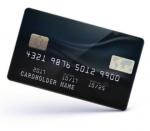When it comes to the decision of upgrading versus maintaining an older vehicle, the answer isn't always straightforward. While there's a certain charm to keeping a long-time companion on the road, the financial implications of repairs, reduced fuel economy, and the lack of modern amenities can tip the scales in favor of an upgrade. In this context, understanding the value locked in your current car and how it can be leveraged for your next purchase is crucial.
This article will guide you through a strategic approach to leveraging trade-ins and loans effectively for a car upgrade. Whether you are eyeing the latest model or a pre-loved vehicle that's new to you, we'll explore how to make the most of your existing car's value and navigate the nuances of car financing in Australia. With smart planning and the right insights, you can turn your existing vehicle into a powerful bargaining chip for that coveted upgrade.
Understanding Trade-In Value
Entering the world of auto trade-ins can be as mystifying as it is exciting. The trade-in value of your car is the amount a dealer is willing to offer you towards the purchase of another vehicle. But what factors into this figure? Several variables are at play, including the car's make, model, year, mileage, overall condition, and market demand. Dealers also consider wholesale prices and auction data to determine how much they'll offer for your ride.
Depreciation is the relentless tide affecting every vehicle's worth from the moment it leaves the showroom floor. Most cars depreciate fastest in the first few years, with a more gradual decline thereafter. The depreciation curve means that newer cars lose value rapidly, and older vehicles, while lower in absolute value, tend to hold their worth proportionally better over time.
To maximize the trade-in value of your vehicle, regular maintenance is key. Keep a detailed record of all services and repairs, as a well-documented history can enhance a car’s appeal. Address minor mechanical issues, ensure the vehicle is clean, and consider minor cosmetic work if it will significantly increase your car’s allure to the dealer. These efforts can make a noticeable difference in the trade-in valuation.
Moreover, entering a dealership with a confident negotiation stance is critical. Research your vehicle's value using reputable online resources, understand the market demand for your car, and visit multiple dealers to gather various trade-in offers. Equipped with this information, you can negotiate from a position of strength, potentially increasing your car's trade-in value and setting the stage for a better upgrade deal.
The Ins and Outs of Car Loans
Introduction to Car Loans for Australian Buyers
Finding the right financing is a critical step for many Australians in the market for a car upgrade. A car loan can offer the necessary funds to bridge the gap between the trade-in value of your old vehicle and the price of your new ride. To navigate this landscape effectively, it's important to understand the different loan structures, terms, and what makes a car loan favourable for your financial situation.
Different Types of Car Loans Available
In Australia, you'll generally find several types of car loans, each with unique features. A secured loan, where the car serves as the collateral, usually offers lower interest rates. In contrast, an unsecured loan doesn't tie the loan to any asset, but might come with higher rates due to the increased risk to the lender. There's also the option of financing through a dealership, which can be convenient but sometimes costlier than securing a loan directly from a bank or credit union.
The Impact of Interest Rates on Your Car Loan
The amount of interest you'll pay on your car loan significantly affects the total cost of your vehicle purchase. Interest rates can vary based on the Reserve Bank of Australia's cash rate, the lender's policies, and your credit-worthiness. A lower interest rate reduces the overall amount you will need to repay, so shopping around for the best rate is a fundamental step in securing a favourable car loan.
How to Secure a Favorable Car Loan
To secure a favourable car loan, start by checking your credit score, which lenders use to assess risk and determine interest rates. A higher credit score can help you obtain lower interest rates. Moreover, prepare for loan shopping by setting a realistic budget, and bring a solid understanding of interest rates and term lengths into the negotiation. Always read the fine print to avoid surprises, and don’t hesitate to negotiate the terms. Lastly, consider making a larger down payment if possible, to reduce the borrowed amount and potentially secure better loan terms.
Balancing Trade-In and Car Loans
Advantages of Using Your Trade-In as a Down Payment
One of the most immediate benefits of using your car as a trade-in is the potential to use the value of your current vehicle as a down payment for the next one. This strategy can significantly reduce the amount you have to borrow, leading to lower monthly repayments. Additionally, offering a high down payment can bolster your bargaining position, which may result in more favorable loan terms, such as a lower interest rate or reduced fees.
Calculating the Right Balance for Your Financial Situation
Ensuring the trade-in offers and loan terms align with your financial situation requires careful consideration. Start by determining how much you can afford in monthly repayments, considering your income and expenses. Then, use loan calculators to experiment with different down payment amounts, loan terms, and interest rates. This exercise will help you find a harmonious balance between trade-in value and loan conditions that won't overextend your budget.
How to Use Your Trade-In to Reduce Your Loan Amount and Interest
Using your trade-in value effectively can lead to substantial savings on your car upgrade. When you apply your trade-in value as a down payment, you lower the total amount financed, which often translates into a reduced interest burden over the life of the loan. Furthermore, the lesser the amount borrowed, the lesser the risk for the lender, which may influence them to offer more competitive rates or agree to a shorter loan term, further decreasing the total interest paid.
Moreover, if your trade-in value is substantial, you might even qualify for a loan product that you wouldn't otherwise have access to without a down payment. As a result, aim to negotiate the highest possible value for your trade-in and understand how it can be strategically applied to enhance the financing of your new car purchase.
Case Study: Successful Car Upgrades
Real-World Examples of Effective Trade-Ins and Financing
There's nothing quite like learning from the experiences of others, and the realm of car upgrades is no different. Across Australia, numerous individuals have successfully navigated the process of trading in their old vehicle and securing financing to upgrade to a newer model. These real-world examples offer valuable insights into the strategies that work and the common pitfalls to avoid.
Insights from Australian Car Buyers
Consider the story of Sarah from Melbourne, who traded in her 2012 hatchback for a spacious 2019 SUV suitable for her growing family. By thoroughly researching her trade-in options and negotiating assertively, she maximized the trade-in value and used it to lower the SUV's loan amount. Sarah's takeaway tip: always come prepared with trade-in value estimates from multiple sources and don't shy away from discussing these figures with the dealer.
Testimonials on Trading In and Financing
Then there's the example of Daniel from Brisbane, who swapped his old sedan for a sleek, energy-efficient hybrid. Daniel cited shopping around for the best loan terms and using an extensive dealer network to compare offers as his key strategies. His testimonial underscores the importance of patience and due diligence when seeking that perfect balance between trade-in valuations and loan agreements.
Applying the Lessons Learned
Speaking with these individuals reveals common themes: the significance of research, the benefit of leveraging a trade-in for loan negotiation, and the wisdom of not rushing the process. One resounding lesson is clear – informed buyers tend to make better deals. So take the time to arm yourself with knowledge, and remember that every bit of effort put into understanding your car's trade-in value and the ins and outs of car loans can pay off significantly when upgrading your vehicle.
Top Tips from Experienced Car Owners
As an endnote to these case studies, here are some actionable tips: Always maintain your vehicle's service records; it can add unexpected value to your trade-in. Get a pre-approval for a loan to understand your budget better. And try to time your purchase; end-of-year sales or new model releases can give you leverage for a better deal on both your trade-in and your new car purchase. By embracing these lessons, Australians can approach car upgrades with confidence and emerge with satisfying results.
The Role of Credit Scores in Car Upgrades
Understanding Your Credit Score and Its Importance in Car Financing
Your credit score plays a pivotal role in the car financing process, serving as a snapshot of your creditworthiness to lenders. This figure, influenced by your credit history, repayment habits, and debt levels, ultimately determines the interest rates you'll be eligible for when seeking a car loan. In essence, a higher credit score can lead to more favorable loan terms, including lower interest rates, leading to cost savings over the life of your loan.
Strategies to Improve Your Credit Score Before Applying for a Loan
Improving your credit score prior to loan application can have significant advantages. Paying bills on time, reducing credit card balances, and refraining from opening new credit accounts in a short period are all effective methods to enhance your score. Additionally, checking your credit report for inaccuracies and disputing any errors is important as these can unfairly bring down your credit rating. These strategies require discipline and planning but can lead to substantial benefits when you're ready to apply for a car loan.
Overcoming Challenges with Credit History When Seeking a Car Loan
Even if your credit history isn't pristine, there are ways to navigate the loan acquisition process for a car upgrade. First, be upfront with lenders about any issues in your credit history and be prepared to explain them. Lenders may consider your current financial stability more than past transgressions if you can demonstrate improved financial habits. Furthermore, saving up for a larger down payment can offset credit score concerns by reducing the lender's risk. Finally, consider a co-signer who can vouch for you, as their good credit can assist you in securing approval for a car loan on more favorable terms.
Working towards improving your credit score is a gradual process but is well worth the effort. With patience and consistent financial behavior, you'll not only stand a better chance of getting a car loan but may also save money with lower interest rates and better terms when upgrading your vehicle in Australia.
Advanced Tips for Smart Buyers
Timing Your Trade-In and Loan Application
Timing is everything in the world of car trading and financing. To get the best terms, consider the cyclical nature of car sales. Dealerships often look to clear inventory towards the end of the year, which can result in better trade-in deals as they're eager to make sales. On the financial side, time your loan application when you have a strong credit profile. Monitor interest rates and aim to lock in a loan when rates are low, providing long-term savings on your car upgrade.
Exploring New vs. Used Vehicles: Cost-Benefit Analysis
Deciding between a new and used vehicle warrants a cost-benefit analysis. New cars offer the latest technologies and full warranties but depreciate quickly. On the other hand, used cars can provide substantial savings and retain value better over time. Consider depreciation rates, ongoing costs, warranty coverage, and your lifestyle needs when choosing. Remember that trade-in negotiations can differ vastly between new and used car dealerships, so always enter discussions well-informed about your car's market value.
Insurance Considerations With Your Upgraded Car
Upgrading your car is not just about negotiating trade-in values and securing loans; it’s also about adjusting your insurance. Premiums may increase, especially if you're moving to a newer, more valuable model. Research insurance costs prior to finalizing your upgrade to factor these into your budget. Sometimes, the trade-in process and loan agreement can be used to negotiate better insurance rates or benefits, so don't hesitate to leverage your position to seek out possible insurance savings.
Additionally, be mindful of the insurance transfer and any gaps in coverage during the transition. Whether you decide on a new or used vehicle, make sure that your upgraded car is protected from the moment you take ownership. The peace of mind that comes with the right insurance coverage can make your new car experience all the more enjoyable.
Safeguarding Against Common Pitfalls
Addressing Common Mistakes in Valuing Trade-Ins and Negotiating Loans
When upgrading your car in Australia, it's easy to fall into common traps that can cost you both money and peace of mind. A frequent oversight is undervaluing your trade-in due to a lack of market knowledge. To prevent this, research your vehicle's value comprehensively across various online platforms and get multiple quotes from different dealerships. Moreover, many car buyers rush into loan agreements without fully understanding the terms, which can lead to unfavorable conditions. Take the time to comprehend every detail of your loan contract, including fees, charges, and the flexibility of repayment options, to ensure it aligns with your financial capabilities and future plans.
Ensuring You're Not Upside Down on Your Loan After an Upgrade
Being 'upside down' on a car loan means owing more on the loan than the car's worth—a situation you want to avoid. To mitigate this risk, consider a substantial down payment, which could be your trade-in value, to lower the loan principal. Opt for a loan term that allows for swift equity building in your vehicle, preferably shorter, and avoid add-ons that do not directly add resale value to the car. It's also wise to periodically check your car's value during your loan term to confirm you're not falling into negative equity.
Legal and Financial Protections to be Aware of
In the process of trading in your car and taking out a loan for an upgrade, it's crucial to be aware of your legal and financial rights. Australian Consumer Law provides protections against unfair contract terms and guarantees your right to remedies for faults in a vehicle. Understanding these laws can empower you to make informed decisions and seek correction when things don't go as promised. Additionally, ensure you're informed about any insurance products or warranties offered with your car loan—they can have significant impacts on the long-term affordability and safety of your car upgrade.
If in any doubt, consult with a financial advisor or legal professional before finalizing any deals. Knowing the pitfalls to avoid and the protections at your disposal will not only smooth the path to upgrading your car but also preserve your financial health in the long run.
Conclusion: Next Steps Toward Your Upgrade
We've explored a range of strategies and considerations for leveraging trade-in values and loans to facilitate a car upgrade in Australia. From understanding the factors that affect your vehicle's trade-in value and the significance of timing your sale, to navigating the intricacies of car loans and the impact of your credit score, this article has covered the essentials for making an informed, financially savvy vehicle upgrade.
Remember, the key to a successful trade-in and upgrade lies in research and preparation. Assessing your vehicle's worth, shopping around for the best loan deals, and understanding your credit position can lead to a more favorable outcome. Consider every aspect of the process, including the timing of your trade-in, the choice between a new and used vehicle, and how to maintain financial stability through the transition.
Now is the time to take action. Start by researching your current car's trade-in value, setting out a budget for your upgrade, and getting your finances in order. Don't hesitate to reach out for professional advice or consult additional resources available on FinancialServicesOnline.com.au, where you can find tools and guidance to support your journey towards a new car. Remember, each step you take today brings you closer to the driving experience you aspire to have tomorrow. So go ahead, approach the process with confidence, and drive forward into your next automotive adventure.
Published: Tuesday 19th March, 2024
Last updated: Tuesday 19th March, 2024









